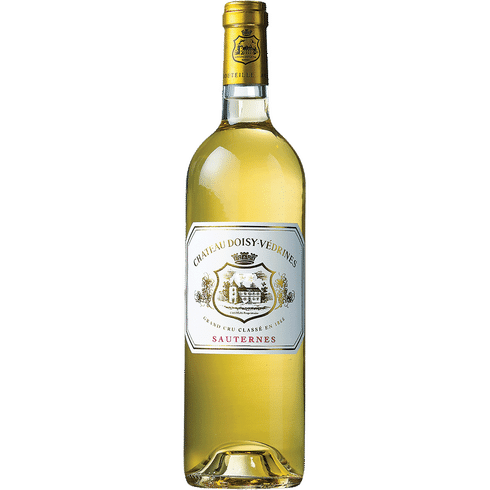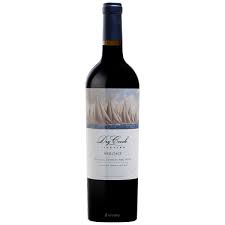2015 Chateau Doisy-Vedrines Chateau Petit Vedrines Sauternes
2015 Chateau Doisy-Vedrines Chateau Petit Vedrines Sauternes Rich sunflower yellow in colour. This is excellent; it has a swish of stone and bright lime, real intensity of flavour, and good persistency. Richer in style than the typical Barsac, with notes of almond cream and orange curd along with honeysuckle, white peach and toasted pineapple flavors. The long, unctuous finish lets the almond hint linger longest. Best from 2020 through 2040.
Bordeaux Blend
A Bordeaux Blend, at its most basic, is any combination of those grape varieties typically used to make the red wines of Bordeaux. The phrase, which seems to have originated with British wine merchants in the 19th Century, relates as much to wines made from the blend as to the grape variety combination itself. Far from being an officially defined or legal term, it is almost never used for wine-labeling purposes (although it occasionally appears on back labels). Its equivalent in the United States is Meritage, which is not only legally defined, but also a registered trademark.
Red Bordeaux Blends are known for their powerful structure and deep flavors. Dark fruits and berries such as plum and blackcurrant are commonly used to describe the flavors of red Bordeaux, although there is an unlimited range of terms that have been ascribed to them. Tannins tend to be relatively high in these wines, giving them a firm structure.
Cabernet Sauvignon is widely accepted as a compulsory component of any Bordeaux Blend, with Merlot following close behind. In fact, the majority of Bordeaux Blend wines are often made exclusively from a blend of these two varieties. The remaining components are Cabernet Franc, Petit Verdot and Malbec, used in varying combinations and proportions. Even Carmenere is on the list of possible ingredients, despite being rarely used by modern Bordeaux vineyards (notable exceptions include Haut-Bailly, Brane-Cantenac and Clerc-Milon).
Related products
2019 Jean-Claude Bachelet Saint-Aubin 1er Cru Derriere La Tour Rouge 2019 Jean-Claude Bachelet Saint-Aubin 1er Cru Derriere La Tour Rouge Shedding a touch of youthful reduction to reveal aromas of plums, warm spices, rose petals and forest floor, the 2019 Saint-Aubin 1er Cru Derrière La Tour is medium to full-bodied, concentrated and lively, its deep [...]
2020 Domaine des Lambrays Clos des Lambrays Grand Cru 2020 Domaine des Lambrays Clos des Lambrays Grand Cru, A fresh red, with black currant and black cherry flavors shaded by floral, iron, earth and spice elements. Fluid and on the elegant side, with a solid underlying framework of tannins. Turns a bit leaner on the [...]
2020 Francois Villard Condrieu De Poncins 2020 Francois Villard Condrieu De Poncins Full-bodied, with quite noticeable oak at this stage. Wonderful sense of freshness, however, and great precision. Long, lush and generous yet defined, this is a very classic Condrieu in all its resplendent flamboyance. Cooling almond and coconut on the finish. From 25-year-old Viognier [...]
2020 Jean-Claude Bachelet Saint-Aubin 1er Cru Blanc 2020 Jean-Claude Bachelet Saint-Aubin 1er Cru Blanc Aromas of sweet orchard fruit, dried white flowers, beeswax and freshly baked bread preface the 2020 Saint-Aubin 1er Cru Charmois, a medium to full-bodied, satiny and precise wine with a bright core of fruit, lively acids and a long, saline finish. [...]



